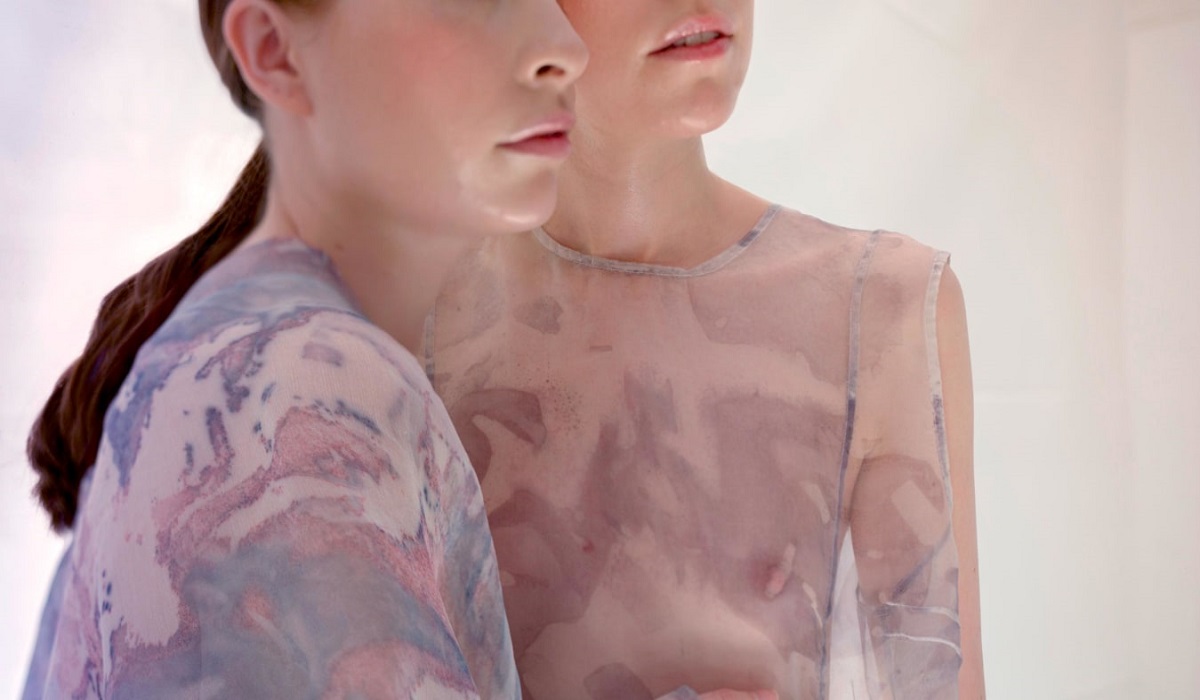An over-reliance on fossil fuels, climate change, and an unhealthy love affair with fast fashion has created an unsustainable fashion industry. Besides the obvious suspects of pollution such as the transport and food industries, the clothing industry is another culprit responsible for environmental damage. It is not only a waste issue that stems from discarding clothes into rubbish bins but waste from the actual process behind producing the garments. Often, clothes are made in countries that rely on factories powered by coal, and the production of clothes involves toxic chemicals and a lot of water. This means that towards the end of the clothes’ life cycle, the textiles are hard to recycle. A 2017 Pulse on the Fashion report noted that back in 2015, the fashion industry used almost 79 billion cubic meters of water, which in simple terms is enough to fill 32 million Olympic-sized swimming pools. 32 million!
Zimbabwean-born designer and researcher Natsai Audrey Chieza is attempting to tackle this issue of waste by exploring alternative more environmentally friendly approaches. Since most of the ecological harm from the fashion industry occurs in the finishing and dyeing phase of clothes production, she set out to find new material systems that are not petroleum-based. Natsai moved to the UK when she was 17 and went on to study architecture at Edinburgh University before pursuing a degree in Materials Futures at Central St Martins. A designer, researcher, and futurist, Natsai reimagines traditional approaches to design, opening our eyes to solutions sourced from nature and biology.
“I discovered other ways to think about design, technology and how through the emerging field of synthetic biology, designers would have to start approaching their practice from a molecular scale. But I also wanted to get my hands dirty. The only way to find out was to immerse myself and build things from living things.” – Natsai in an interview with Design Indaba
Now the designer-in-residence at the University College London’s Department of Biochemical Engineering, Natsai is interested in working with new materials and expanding her innovations to a commercial scale. She has also founded a bio-design lab called Faber Futures that collaborates with clients to explore innovative designs to address sustainability concerns. Faber Futures learns from nature. Literally. It works with bacteria, fungi, and algae to try and devise designs to grow sustainable materials and products. It’s a space for collaborators to come together and come up with designs to address big problems like pollution and climate change. This comes with the realization that time is running out, and change needs to come from designers and industries since we can’t afford to wait for government regulations. Some of these collaborators include consumer biotechnology companies as well as multi-sector brands and institutions, where Faber Futures deals with design and engineering practices on the DNA scale. Originally, a project launched by Natsai and a professor after her masters, Faber Futures first project became arguably it’s most famous. The project replaced chemicals used to dye fabrics with pigment-producing bacteria. Unbelievably, the newly discovered approach used up to 500 times less water than its chemical equivalent: “As we did this, we discovered that its sustainability credentials are pretty impressive.” This discovery couldn’t have been any more timely, considering the World Bank has found that 17-20 percent of all industrial water pollution is caused by the dyeing or treatment of clothes. Bacteria had officially graduated from being something invisible and insignificant to something with the capacity to revolutionize how we design.
Natsai’s work revolves around the space where synthetic biology and creativity intersect. This is where she began her long-time collaboration with a strain of bacteria called Streptomyces Coelicolor, which is found in soil. Its usual task is to decompose organic matter in the soil, but Natsai has harnessed its other unique ability to synthesis organic chemical compounds and produce colorful, almost fluorescent antibiotics called actinorhodin. The range of colors Coelicolor produces is vast and stunning, and all depend on the acidity of the environment they are grown in. To try and curb waste during the dyeing phase of textile production, Natsai went ahead and grew the bacteria directly on meters of silk. The bacteria managed to produce enough dye to create permanent designs of dots and organic shapes. All this beauty came with a ridiculously small environmental impact. Unlike the chemical dyeing process, Natsai’s biology-based technique only required 200 millimeters of water to dye one shirt. Her discovery paved a way for a new alternative material system to be developed. She hopes that bio-design efforts, such as the ones she works on through Faber Futures, will help manufacturers drift away from traditional petroleum-based options.
She explores bio-fabrication as a way to try and develop new material for the future, created from living organisms. This appreciation for the ability of tiny bacteria stems from her time spent studying architecture, where every small detail was integral and plays a key role. Optimism fuels her practice, and an intrinsic need to do something with her expertise to tackle the problems she sees around her. After around 8 years of research and experimentation with Streptomyces coelicolor, Natsai was able to develop a project to appreciate the true capability of bio pigmentation for textiles. She has devised tools, choreographed design methods, and constructed ideal environments to create purposeful garments. There are pale pink silk scarves, gorgeous spotted transparent kimonos in multiple shades, and delicately patterned slips of glossy fabric. A stunning testament to the benefits of collaborating with our invisible partners – bacteria. It only goes to show that we are not only rewarded with aesthetic garments but also with the satisfaction that we’ve (in a small way perhaps) curbed the effect of climate change.


